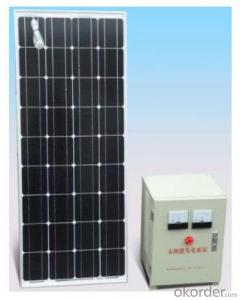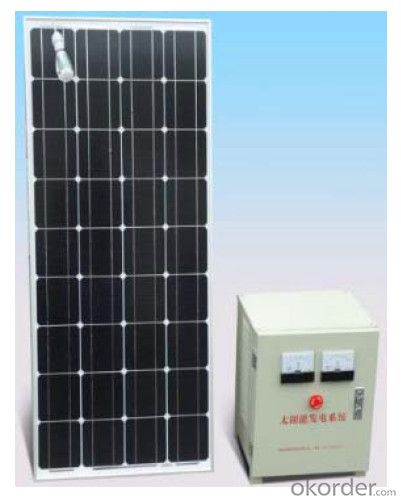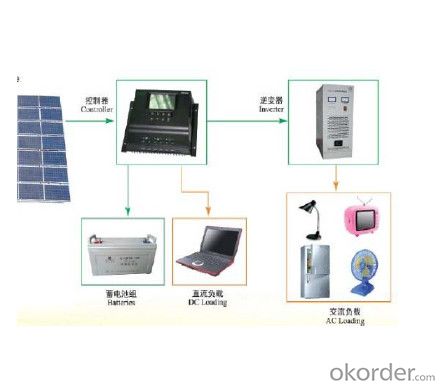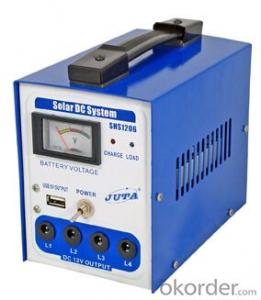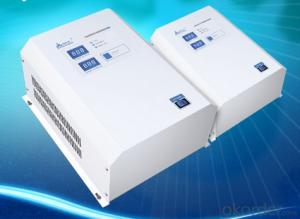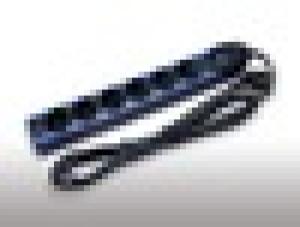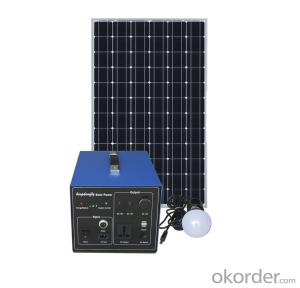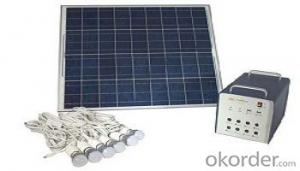Zhenfa-80SK Solar Energy Systems Dallas County Kit
- Loading Port:
- China Main Port
- Payment Terms:
- TT OR LC
- Min Order Qty:
- -
- Supply Capability:
- -
OKorder Service Pledge
Quality Product, Order Online Tracking, Timely Delivery
OKorder Financial Service
Credit Rating, Credit Services, Credit Purchasing
You Might Also Like
In certain emerging markets, Zhenfa new energy offers home owners complete residential solar system solutions to meet their green energy needs. Zhenfa's residential solar power systems are designed to meet different building applications in system sizes of 1.68kW and 3.9kW. Zhenfa also provides customized solar system solutions for special solar power systemapplications.
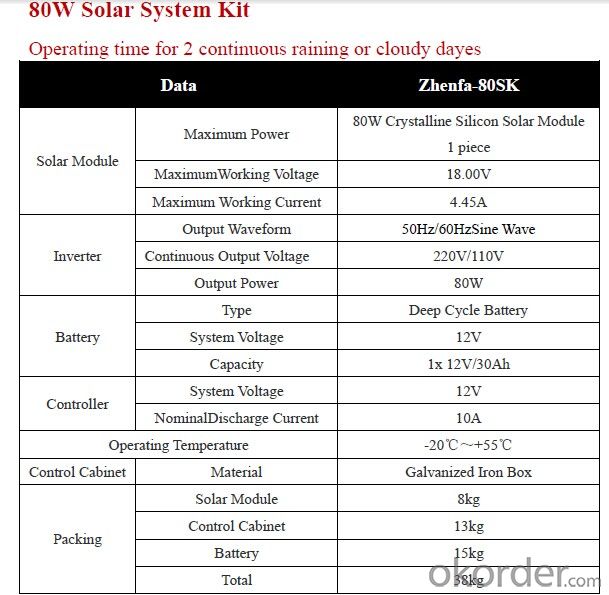

- Q: Can a solar energy system be installed in areas with high winds?
- Yes, a solar energy system can be installed in areas with high winds. However, it is important to ensure that the system is properly designed and installed to withstand the wind conditions of the specific area. This may involve using strong and durable mounting systems, reinforced frames, and secure anchoring methods to ensure the panels and components remain stable during high wind events.
- Q: Can solar energy systems be installed on multi-story buildings?
- Yes, solar energy systems can be installed on multi-story buildings. In fact, many multi-story buildings have successfully implemented solar panels on their rooftops or façades to harness solar energy and generate electricity.
- Q: How does the efficiency of solar panels vary across different roof types?
- The efficiency of solar panels can vary across different roof types due to several factors. One of the main factors is the orientation and tilt of the roof. Solar panels are most efficient when they are facing towards the sun, ideally at a tilt that matches the latitude of the location. Therefore, roofs with a south-facing orientation and a suitable tilt generally have higher efficiency. Roof shading is another important factor. If a roof is shaded by trees, buildings, or other obstructions, it can significantly decrease the efficiency of solar panels. Even partial shading on a small portion of the roof can impact the overall performance of the entire solar system. The material and condition of the roof can also affect efficiency. Certain roof materials, such as metal or asphalt shingles, can reflect sunlight and increase the overall efficiency of solar panels. On the other hand, roofs with a lot of dirt, debris, or damage may decrease efficiency as they can block or hinder the absorption of sunlight. The size and shape of the roof also play a role. Roofs with a larger surface area can accommodate more solar panels, thereby generating more electricity. Additionally, roofs with a simple shape, such as flat or slightly sloped, tend to be more conducive to efficient solar panel installation compared to complex roof designs with many angles and obstacles. Lastly, the local climate and weather patterns can impact solar panel efficiency. Areas with high levels of sunlight throughout the year generally have higher efficiency compared to regions with frequent cloud cover or limited sun exposure. In conclusion, the efficiency of solar panels can vary across different roof types due to factors such as orientation, shading, roof material and condition, size and shape, as well as local climate and weather patterns. Consulting with a solar professional can help determine the optimal solar panel system for a specific roof type, maximizing energy production and efficiency.
- Q: Can solar energy systems be used in powering outdoor signage or billboards?
- Yes, solar energy systems can be used to power outdoor signage or billboards. Solar panels can be installed on the structures and absorb sunlight to generate electricity, which can then be used to power the signage or billboards. This reduces the reliance on traditional energy sources and helps to make outdoor advertising more sustainable.
- Q: Can solar energy systems be used for heating swimming pools?
- Yes, solar energy systems can be used for heating swimming pools. Solar thermal systems are specifically designed to collect and harness the sun's heat, which can then be used to warm water in swimming pools. These systems are cost-effective, environmentally friendly, and can significantly reduce energy consumption compared to traditional heating methods.
- Q: Can a solar energy system be installed on a concrete roof?
- Yes, a solar energy system can be installed on a concrete roof. In fact, concrete roofs are one of the most ideal surfaces for solar panel installation. Concrete roofs are typically flat, stable, and durable, providing a solid foundation for the panels. Additionally, concrete roofs often have ample space and are not obstructed by nearby trees or buildings, allowing for maximum sunlight exposure. The installation process involves securing the panels to the concrete roof using special mounting systems designed to withstand the weight and ensure a secure attachment. Overall, concrete roofs are a great choice for solar energy system installation.
- Q: How do solar energy systems impact the structural integrity of a building?
- Solar energy systems have a minimal impact on the structural integrity of a building. In fact, they are designed to be installed on rooftops or as standalone structures without compromising the structure's stability. The weight of solar panels is relatively light, and modern technologies have made them even lighter than before. The panels are typically mounted on racks or frames that distribute the weight evenly across the surface area. Additionally, roof-mounted solar panels are usually installed with the help of professional engineers who ensure that the load is properly distributed and does not exceed the roof's weight-bearing capacity. Moreover, solar panels act as a protective layer for the roof by shielding it from direct sunlight, rain, and other weather elements. This can actually extend the lifespan of the roof by preventing UV damage and reducing the thermal stress caused by extreme temperatures. In some cases, additional reinforcement may be required, especially for installations on older buildings or in areas prone to seismic activity or heavy snow loads. However, these considerations are part of the installation process and are taken into account by experienced professionals. Overall, solar energy systems have a negligible impact on the structural integrity of a building and can even provide added protection to the roof. They are designed to be safe, reliable, and durable, ensuring the long-term stability and sustainability of the building.
- Q: What is the difference between a monofacial and bifacial solar panel?
- A monofacial solar panel is a conventional type of solar panel that only uses one side of the panel to capture sunlight and convert it into electricity. Photovoltaic (PV) cells on the single side of the panel absorb sunlight and produce electrical current. Monofacial panels are the most commonly used type of solar panels. On the other hand, a bifacial solar panel is designed to capture sunlight from both sides of the panel. It has PV cells on both the front and back sides, allowing it to generate electricity from sunlight that is reflected or scattered onto the back side. This design has an advantage over monofacial panels as it can generate more energy by harnessing light that would otherwise be wasted. The main difference between monofacial and bifacial solar panels lies in their efficiency and energy output. Bifacial panels can produce more electricity per unit area than monofacial panels because they can capture light from both sides. This makes bifacial panels a suitable choice for situations where space is limited and maximizing energy production is crucial. Additionally, bifacial panels can benefit from certain installation configurations that allow light to bounce off the ground or other nearby surfaces onto the backside of the panel, further increasing their energy output. This makes them particularly effective in environments with high levels of ground reflectance, such as snow-covered areas or locations with white rooftops. However, it is important to note that the increased efficiency and energy output of bifacial panels come at a higher cost compared to monofacial panels. Bifacial panels require more complex design and manufacturing processes, which contribute to their higher price. Additionally, the installation of bifacial panels may require specialized mounting systems to ensure proper exposure to both sides of the panel. To summarize, the main difference between monofacial and bifacial solar panels is their ability to capture sunlight. Monofacial panels use only one side of the panel to generate electricity, while bifacial panels utilize both sides, resulting in higher efficiency and energy output. However, the higher cost and specific installation requirements make bifacial panels a more specialized choice compared to the widely used monofacial panels.
- Q: Can solar energy systems be installed in urban areas?
- Yes, solar energy systems can be installed in urban areas. In fact, urban areas can be highly suitable for solar installations due to the availability of rooftops and open spaces on buildings. Additionally, advancements in solar technology have made it possible to integrate solar panels into urban infrastructure, such as solar-powered streetlights and parking meters. This allows urban areas to harness clean and renewable energy while utilizing available space efficiently.
- Q: Can a solar energy system be installed on a parking garage or structure?
- Yes, a solar energy system can be installed on a parking garage or structure. In fact, parking garages and structures are often ideal locations for solar panel installations due to their large, open areas and unobstructed access to sunlight. Installing solar panels on parking structures not only helps to generate clean and renewable energy, but it can also provide shading for parked vehicles, reducing the heat island effect and improving energy efficiency.
Send your message to us
Zhenfa-80SK Solar Energy Systems Dallas County Kit
- Loading Port:
- China Main Port
- Payment Terms:
- TT OR LC
- Min Order Qty:
- -
- Supply Capability:
- -
OKorder Service Pledge
Quality Product, Order Online Tracking, Timely Delivery
OKorder Financial Service
Credit Rating, Credit Services, Credit Purchasing
Similar products
Hot products
Hot Searches
Related keywords
